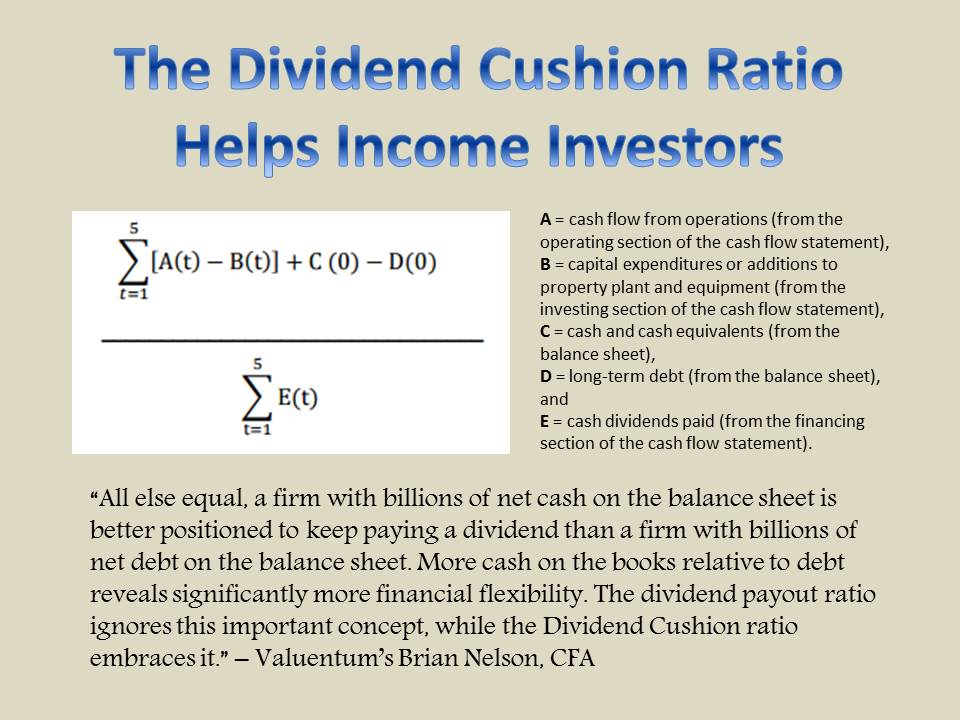Member LoginDividend CushionValue Trap |
Fundamental data is updated weekly, as of the prior weekend. Please download the Full Report and Dividend Report for
any changes.
Latest
Valuentum Commentary
Aug 14, 2020
Our Thoughts on Chevron Buying Noble Energy
Image Shown: An overview of Chevron Corporation’s all-stock acquisition of Noble Energy Inc that was announced in July 2020. Image Source: Chevron Corporation – July 2020 Noble Energy Acquisition Presentation. On July 20, Chevron Corp announced it was acquiring Noble Energy through a $5.0 billion all-stock transaction, or $13.0 billion when factoring in net debt and the book value of non-controlling interests. Shareholders of Noble Energy will receive approximately 0.12 share of Chevron for each share of Noble Energy. At the time the deal was announced, shareholders of NBL were receiving a ~12% premium based on the ten-day average closing stock prices. Chevron intends to issue ~58 million shares to cover the deal, keeping in mind the firm had approximately 1.85 billion shares outstanding on a weighted-average diluted basis as of the second quarter of 2020. The deal is expected to close during the fourth quarter of this year and is forecasted to generate $0.3 billion in annualized run-rate cost synergies one year after closing. Jun 16, 2020
Exxon Mobil Puts on a Brave Face
Image Source: Exxon Mobil Corporation – November 2019 Guyana IR Presentation. Near-term oil prices and most importantly, the oil price futures curve, have improved materially since just a couple of months ago when it looked like the sky was falling. For the first time ever, WTI turned negative in April 2020 for physical deliveries due May 2020 of light sweet oil to Cushing, Oklahoma, as storage options were limited (and arguably, many speculators had jumped into the market not fully aware of the risks they were taking on). Exxon Mobil Corp has seen its share price recover considerably since the drop, though we caution that management’s commitment to the dividend will prove a hard task if things do not improve materially in the short-term. As of this writing, near-term futures for WTI and its international counterpart Brent are trading near $40 per barrel. In the face of COVID-19, low raw energy resource prices (Exxon Mobil’s upstream operations form its largest single business segment), and subdued demand for refined petroleum and petrochemical products (from gasoline to plastics) have significantly weakened Exxon Mobil’s cash flow profile. The ongoing coronavirus (‘COVID-19’) pandemic has shaken energy markets to their core in ways we have not seen ever before. Shares of XOM yield ~7.4% as of this writing. We give Exxon Mobil a Dividend Cushion ratio at 0.2, though its Dividend Safety rating is “GOOD” given the company’s ability to tap capital markets, especially debt markets as the oil giant carries high quality “A-rated” investment grade credit ratings. There is a limit to how much debt Exxon Mobil can take on to cover its dividend obligations, however, which we will cover in greater detail in this article. Apr 13, 2020
Historic Oil Deal Reached
Image Source: Chevron Corporation - March 2020 Security Analyst Meeting Presentation. Over the Easter holiday weekend, members from the Organization of Petroleum Exporting Countries (‘OPEC’), non-OPEC members that are part of the OPEC+ group (countries that in the recent past have joined forces with OPEC to curtail global oil supplies in a formal manner), and non-OPEC members outside of the OPEC+ group such as Brazil, Canada, and the United States came to an agreement to cut their collective oil output by north of 10 million barrels per day. Global oil and other raw energy resource prices have been simply demolished year-to-date due to a combination of demand destruction from the ongoing coronavirus (‘COVID-19’) pandemic and the emergence of a price war between Saudi Arabia and Russia. Please note that oil demand destruction due to the “cocooning” of households (and the related drop off in refined petroleum product demand from automobiles, airplanes, etc.) may be as high as 35 million barrels per day according to some analysts, an enormous figure that’s resulting in major stockpile buildups all over the world. Other analysts don’t necessarily see the level of demand destruction as that high (projections are being updated constantly); however, they are still calling for a drop off in demand that’s in the ten(s) of millions of oil barrels per day range (at least in the short-term, depending on how long the pandemic lasts). Even if this agreement is effectively implemented, that won’t result in oil prices (and other raw energy resource prices) returning to pre-COVID-19 levels in the short/medium-term, in our view, but will make emerging from this pandemic an easier task given that global oil storage capacity is nearing its limit. As of this writing on April 13, oil prices are trading up modestly but are still down by well over 50% year-to-date. Mar 27, 2020
Our Reports on Stocks in the Independent Oil & Gas Industry
Images Source: Anadarko. We've reallocated our resources to optimize our energy coverage. Jan 23, 2020
Resetting Your Mental Model
Image Source: affen ajlfe. Having the right mental model and using the right information can be the reason why you win or lose in investing. Nov 18, 2019
Big Energy Earnings Roundup
Image Source: Exxon Mobil Corporation – Third Quarter 2019 Earnings Presentation. As long as raw energy resource prices remain lackluster, the upstream divisions of the major energy giants will continue to generate far less cash flows than they did during the boom period (2010-2014). For Chevron, Shell, Total, and Exxon Mobil, their downstream operations offer a degree of stability but their large net debt positions and hefty capital expenditure budgets will continue to pressure their financials for some time. While Conoco doesn’t possess downstream operations anymore after the split with Phillips 66 in 2012, management’s focus on net debt reduction and free cash flows post-2014 puts COP in a better position than most of these bigger integrated peers (particularly CVX, RDS and XOM). That being said, we don’t include Conoco in any of our newsletter portfolios in part due to its lack of a “natural hedge” (downstream operations) and its direct exposure to raw energy resource prices. BP plc continues to represent one of our favorite plays in the energy space and shares of BP are included in our simulated High Yield Dividend Newsletter portfolio. We like BP’s cash flow profile, its stellar operational execution of late (upstream projects are consistently getting turned online under-budget and ahead of schedule), and its impressive downstream asset base. Members interested in reading more about why we like BP should check out this piece here, and if you may wish to add the High Yield Dividend Newsletter to your membership, please click here. Shares of BP yield 6.3% as of this writing and our fair value estimate of $45 per share of BP is comfortably above where shares are currently trading at. Nov 1, 2019
Dividend Increases/Decreases for the Week Ending November 1
Let's take a look at companies that raised/lowered their dividend this week. Aug 6, 2019
Oil Major Second-Quarter 2019 Earnings Roundup
Image Source: Exxon Mobil Corporation -- IR Presentation. Let’s look at the Oil Majors that have recently reported earnings. Global raw energy resource prices have plunged lower as concerns over the US-China trade war and the possibility a global synchronized slowdown in economic growth are beginning to emerge. We will be monitoring the situation closely going forward. Aug 28, 2018
ETF Analysis: Energy
Energy sector ETFs offer a diversified way to capture the potential for higher crude oil prices without being exposed to the capital budget decisions of any one operator. May 2, 2018
Optimizing Coverage
We're shifting our coverage around a bit to better allocate resources to areas that are of interest to you! Latest News and Media The High Yield Dividend Newsletter, Best Ideas
Newsletter, Dividend Growth Newsletter, Nelson Exclusive publication, and any reports, articles and content found on
this website are for information purposes only and should not be considered a solicitation to buy or sell any
security. The sources of the data used on this website are believed by Valuentum to be reliable, but the data’s
accuracy, completeness or interpretation cannot be guaranteed. Valuentum is not responsible for any errors or
omissions or for results obtained from the use of its newsletters, reports, commentary, or publications and accepts
no liability for how readers may choose to utilize the content. Valuentum is not a money manager, is not a
registered investment advisor and does not offer brokerage or investment banking services. Valuentum, its employees,
and affiliates may have long, short or derivative positions in the stock or stocks mentioned on this site.
|

